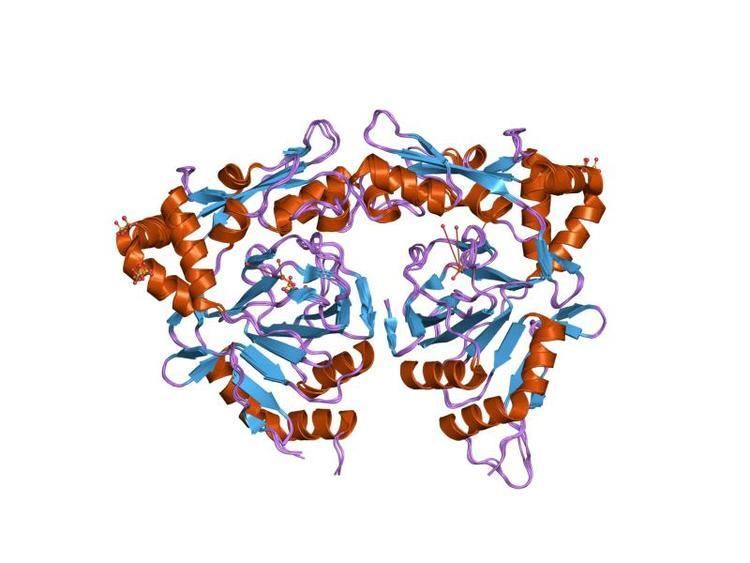Symbol TauD Pfam clan CL0029 SCOP 1gy9 | Pfam PF02668 InterPro IPR003819 SUPERFAMILY 1gy9 | |
 | ||
In molecular biology, TauD refers to a protein domain that in many enteric bacteria is used to break down taurine (2-aminoethanesulphonic acid) as a source of sulphur under stress conditions. In essence, they are domains found in enzymes that provide bacteria with an important nutrient.
Contents
Function
This protein family consists of TauD/TfdA taurine catabolism dioxygenases. The Escherichia coli tauD gene is required for the utilization of taurine (2-aminoethanesulphonic acid) as a sulphur source and is expressed only under conditions of sulphate starvation. TauD is an alpha-ketoglutarate-dependent dioxygenase catalyzing the oxygenolytic release of sulphite from taurine. The 2,4-dichlorophenoxyacetic acid/alpha-ketoglutarate dioxygenase from Burkholderia sp. (strain RASC) also belongs to this family. TfdA from Ralstonia eutropha (Alcaligenes eutrophus) is a 2,4-D monooxygenase.
Structure
This structure has a number of alpha helices and beta sheets. PDB structure
